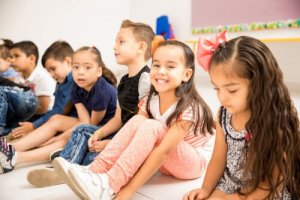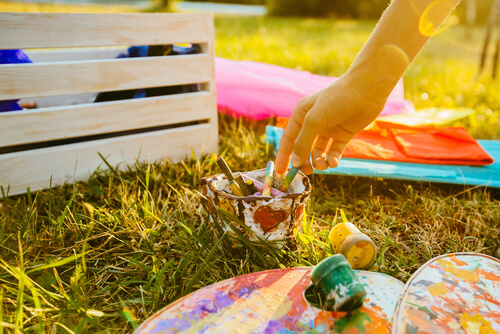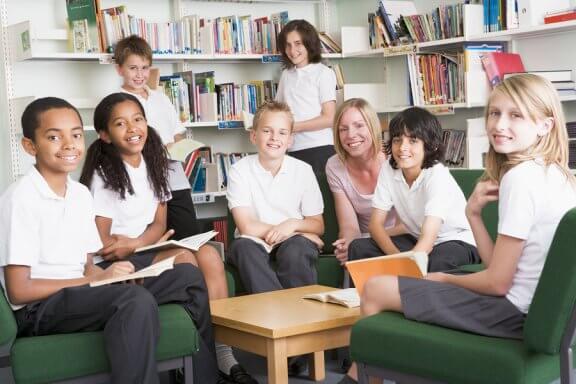Ken Robinson's Tips to Develop Creativity in Children

Freedom, discipline, and work are part of Ken Robinson’s keys to develop creativity. This defender of natural creative ability, especially in children, recognizes creativity as the chance to explore new ways, face challenges, and solve problems.
How to develop creativity: Passion is the element
Ken Robinson defines creativity as a process to generate valuable ideas. According to his theories, the first step to develop creativity is to find what you’re truly passionate about. Above all, it’s what he defines as the element that will change people’s lives and what their illusions and energy will be directed at.

Ken Robinson’s tips to develop your intelligence
Children need help in this search for their passion, without imposing nor influencing them. For instance, Ken proposes that parents and teachers not get carried away with what they know, but to look for what inspires, motivates, and catches little ones’ eyes. At the same time, they’ll see what they dislike.
When children find the element, the next step is to give it value and importance. In addition, the priority should be the learning process itself, and not letting doubts and insecurities defeat them.
Educational revolution
Sir Ken Robinson is a British author, speaker, and an international advisor on creativity and its involvement in learning processes. In his Robinson Report, he points out the lack of creativity in the current education system.
His constructive criticism on the education system includes keywords such as children’s potential and curiosity. He also refers to the arts, leadership, and learning as fundamental elements in the development of children and teenagers.

Education and creativity, parallel processes
Robinson also proposes parallel processes to develop creativity and, therefore, learn. He sees them as related concepts because whoever develops their creative capability will have more desire to learn.
This famous connoisseur of children’s learning assures us that creative ability can’t be developed when people learn basic concepts in different subjects that they’ve studied throughout their learning years.
“Ken Robinson defines creativity as a process to generate valuable ideas; the first step to develop it is to find what we’re truly passionate about.”
Appetite for discovery
What Sir Robinson defines as an appetite for discovery is the desire to learn. Regarding this, he says that “the more creative the person, the bigger their desire to learn. The more they learn, the more creative they’ll be.”
The author invites the parents and teachers to boost this appetite for discovery. Similarly, they can do this through motivation and comprehension of the benefits of being creative. Don’t impose anything on the child. Robinson believes that a child with a spark of creativity will be a fast learner.
Robinson also invites teachers to check if they’re doing things right and evaluate if the teaching process is going well. How you discipline the child, understanding that creativity and chaos aren’t the same things, is another key aspect for Robinson.
Always remember that children must be free to develop their creativity. Nevertheless, this has to be focused around real work dynamics.
As part of his theories, Robinson dismisses schools that award these abilities in different subjects, but don’t encourage creativity. This way children get discouraged and waste their innovative abilities and their talent.
Another approach to help kids is to not be afraid of being wrong. Let them understand that to be innovative and creative, they have to lose the fear. Robinson regrets that the school system stigmatizes mistakes and kills creativity.
Schools only educate the brain, not their imagination. It teaches children how to work, not to thrive through their own talents and creativity. Robinson questions the fact that schools don’t appreciate intelligence, just that the students excel in subjects.

The educational revolution to develop creativity
In short, Robinson proposes an educational revolution to dismiss preconceived ideas and teaching linear processes. He claims that “superficial changes won’t be enough, education needs to transform into something different, to develop people’s abilities.”
According to the researcher, the biggest challenge is to change schools’ definition of intelligence, which should be interactive, dynamic, and unique. What he proposes is that individuals find their unique talent and develop it.
For Robinson, the arts are important because they can touch a child’s heart. He highlights the fact that children are natural learners; the current school system is failing to nurture their innate talents and capabilities.
These keys to developing creativity will help in creating generations of children with talent and intelligence. Likewise, understanding these keys as a contribution to children’s spiritual and educational growth is almost an obligation.
All cited sources were thoroughly reviewed by our team to ensure their quality, reliability, currency, and validity. The bibliography of this article was considered reliable and of academic or scientific accuracy.
- Azzam, A. M. (2009). Why creativity now? A conversation with Sir Ken Robinson. Educational Leadership, 67(1), 22-26. https://blogs.sch.gr/mariamoschou/files/2012/02/Sir-Ken-Robinson-Why-Creativity-Now.pdf
- Lowenfeld, V. (1987). Desarrollo de la capacidad creadora. Ed. Kapelusz. Argentina: Buenos aires.
- Madi, I. (2012). La creatividad y el Niño. Palibrio. Estados Unidos.
- Robinson, K. (2006). Do schools kill creativity?.
- Vargas, R. R. (2001). Niños creativos.
- Wallon, P., Cambier, A. y Engelhart, D. (1992). El dibujo del niño. Siglo XXI editores. España: Madrid.
This text is provided for informational purposes only and does not replace consultation with a professional. If in doubt, consult your specialist.








